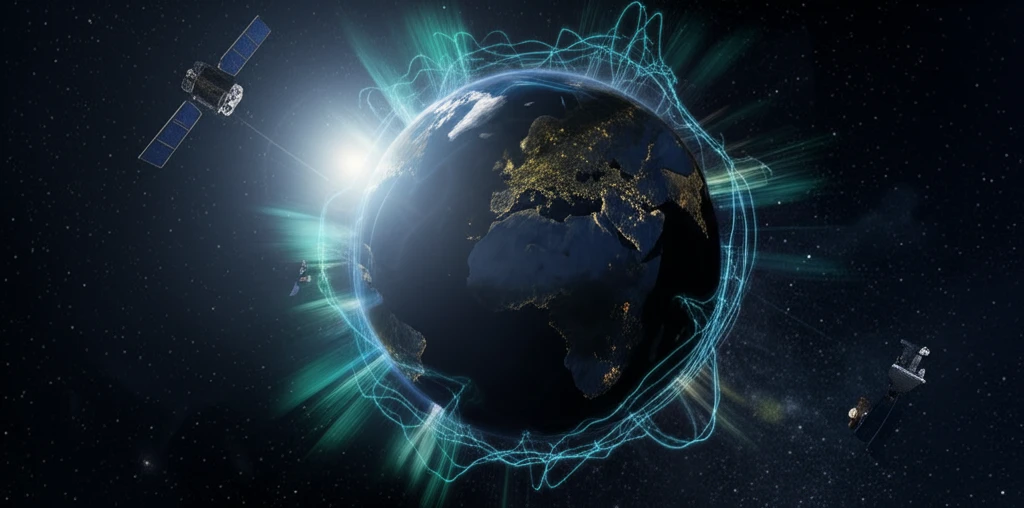
Decoding Auroral Hall Currents: What Swarm Satellite Data Reveals About Space Weather
"New research unveils the global characteristics of auroral Hall currents using data from the Swarm constellation, deepening our understanding of space weather and its impact on Earth."
The mesmerizing dance of the Northern and Southern Lights, known as the aurora borealis and australis, has captivated humanity for centuries. These celestial displays are not mere aesthetic phenomena; they are visual manifestations of complex interactions between the solar wind and Earth's magnetosphere and ionosphere. Understanding these interactions is crucial for predicting and mitigating the effects of space weather, which can disrupt satellite communications, power grids, and other critical infrastructure.
Central to this understanding are auroral currents, electrical currents flowing in the ionosphere at high latitudes. Among these, Hall currents play a significant role in the horizontal current system, particularly within the auroral electrojets. These electrojets are concentrated currents that can intensify during geomagnetic disturbances, posing a risk to technological systems on Earth and in space.
Recent research, leveraging data from the European Space Agency's (ESA) Swarm constellation, has provided unprecedented insights into the global characteristics of auroral Hall currents. This study not only confirms previous findings but also reveals new dependencies on season and the orientation of the Interplanetary Magnetic Field (IMF), offering a more comprehensive picture of these dynamic current systems.
What are Auroral Hall Currents and Why Do They Matter?

Auroral Hall currents are a type of electrical current that flows horizontally in the Earth's ionosphere, primarily at high latitudes within the auroral zone. These currents are generated by the complex interaction between the solar wind, the Earth's magnetosphere, and the ionosphere. Unlike field-aligned currents (FACs), which flow along the Earth's magnetic field lines, Hall currents flow perpendicular to both the magnetic field and the electric field. Auroral Hall currents are a fundamental component of the intricate electrical circuitry in the upper atmosphere.
- Space Weather Prediction: Hall currents play a significant role in the overall dynamics of the ionosphere. Studying their behavior helps refine space weather models, improving our ability to predict geomagnetic disturbances that can disrupt satellite communications, power grids, and navigation systems.
- Ionospheric Modeling: Detailed knowledge of Hall current distribution and intensity allows scientists to develop more accurate ionospheric models. These models are essential for various applications, including radio communication, satellite tracking, and understanding atmospheric processes.
- Energy Transfer: Hall currents are involved in the transfer of energy from the magnetosphere to the ionosphere. Understanding how energy is dissipated and distributed within the ionosphere is crucial for understanding the overall energy budget of the Earth's upper atmosphere.
- Technological Impact: Intense Hall currents, particularly during geomagnetic storms, can induce currents in ground-based conductors such as pipelines and power lines. Understanding these currents is essential for mitigating potential damage to infrastructure.
Looking Ahead: Future Directions in Auroral Current Research
The Swarm mission has opened new avenues for studying auroral currents and their impact on the Earth's environment. By continuing to analyze Swarm data and integrating it with other ground-based and space-based observations, scientists can further refine our understanding of space weather and its potential effects. Future research should focus on developing more sophisticated models that capture the complex interplay between auroral currents, the IMF, and the solar wind, leading to more accurate space weather forecasts and improved protection of critical infrastructure.
